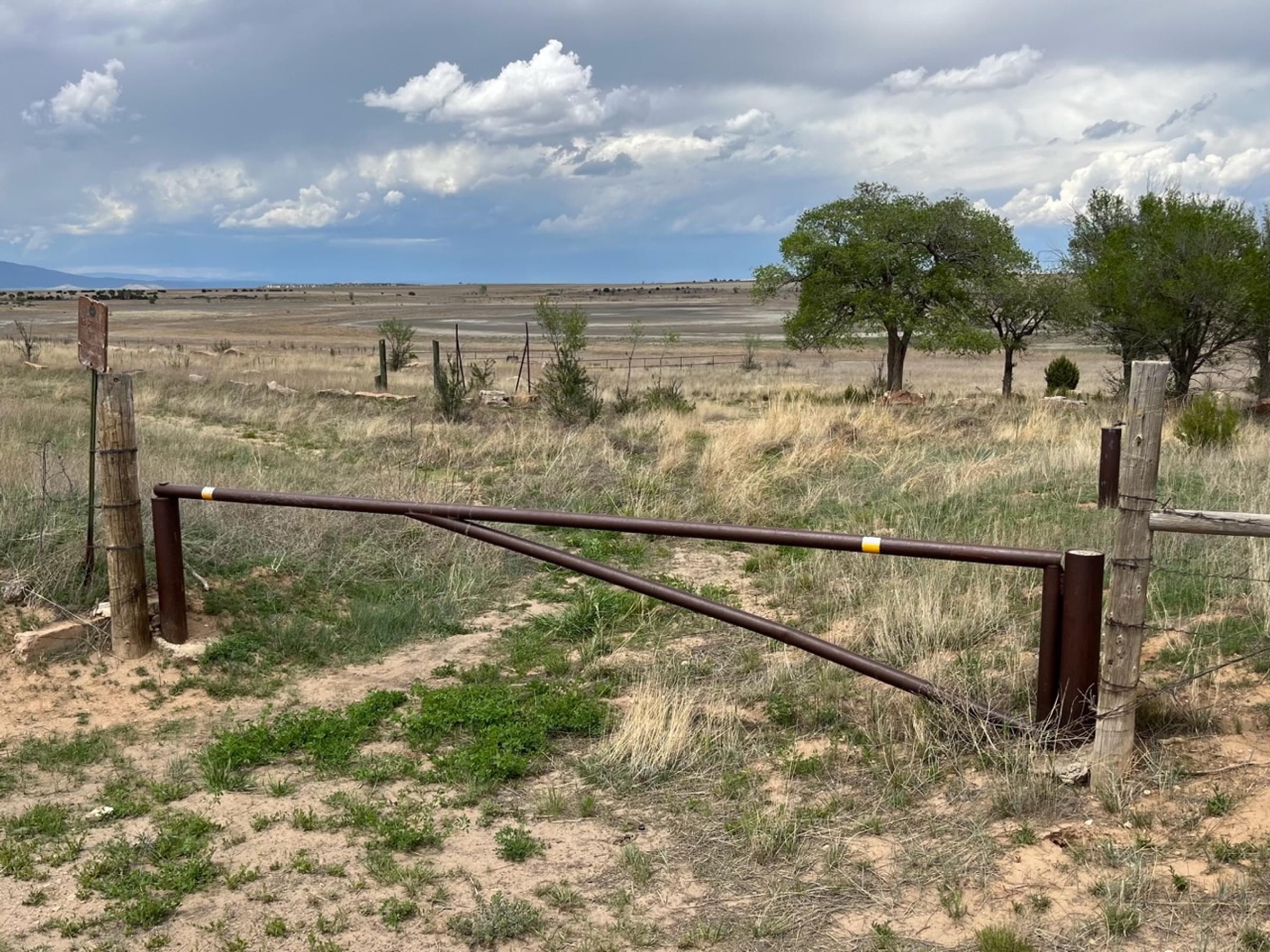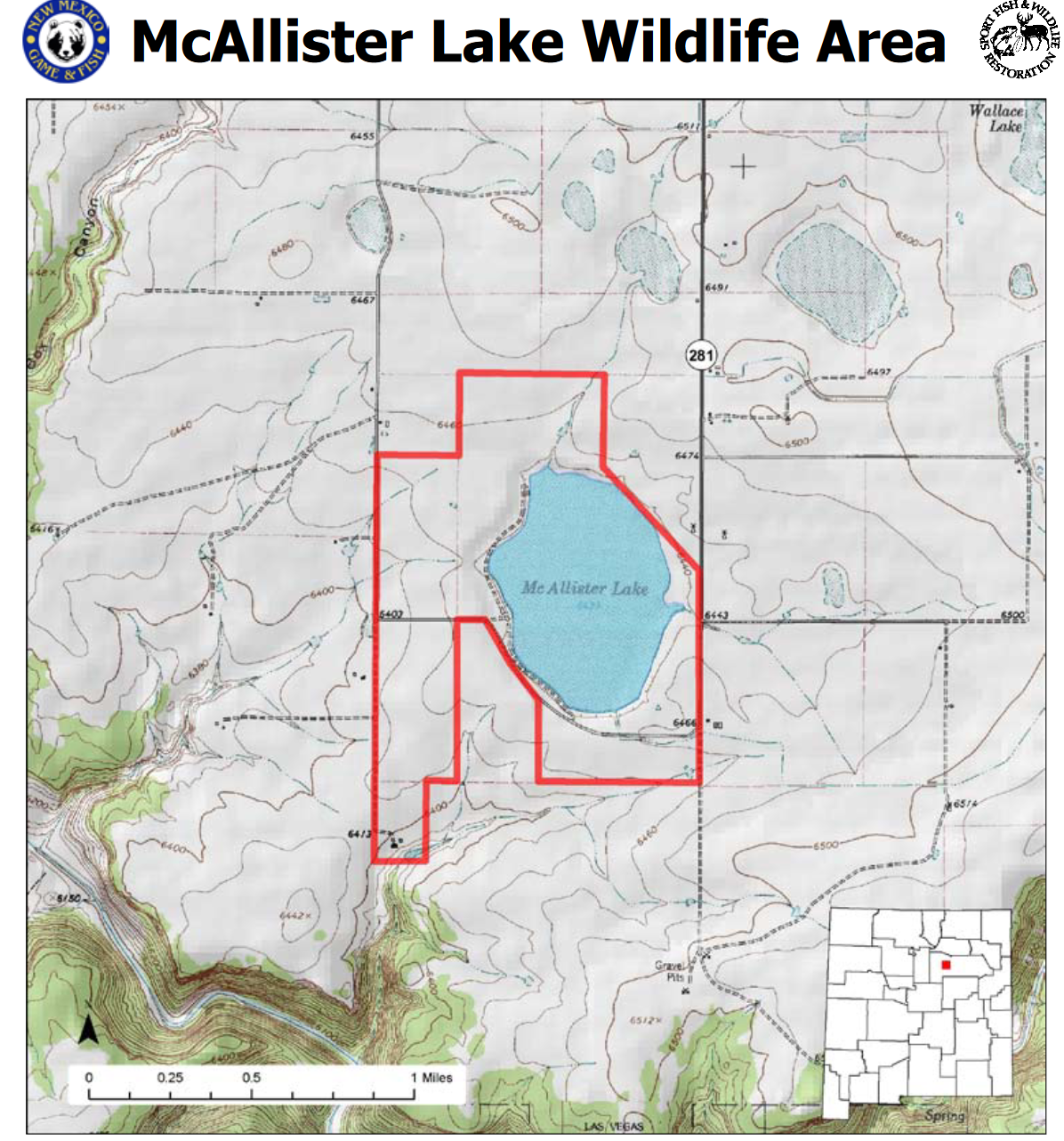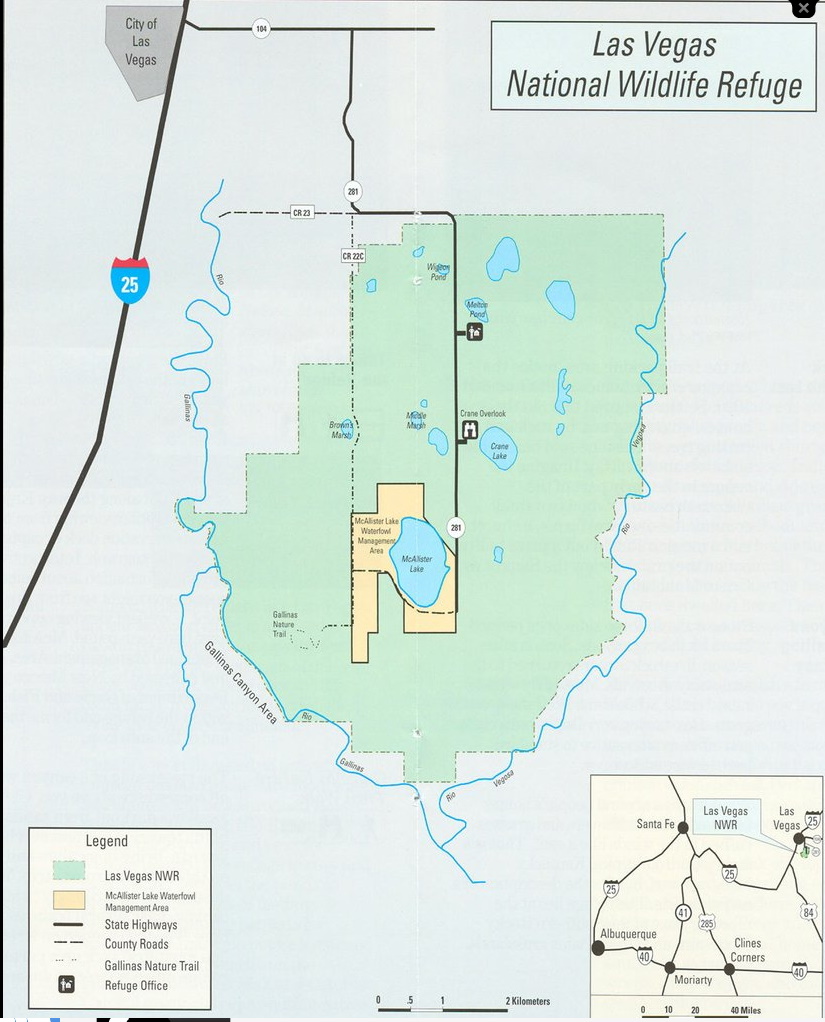McAllister Lake WMA

McAllister Lake WMA
Las Vegas, New Mexico 87701
McAllister Lake Wildlife Management Area guide and mapLas Vegas National Wildlife Refuge Official Website
Las Vegas National Wildlife Refuge map
About this Location
Despite McAllister Lake being one of the top five, ranked by the number of species observed, hotspots in the county, the 623-acre Wildlife Management Area surrounded by Las Vegas National Wildlife Refuge has not been attracting near the historical diversity or abundance of birds that it once did. The reason is that for many years the lake, managed by the State Game and Fish Department (NMGFD), was dry. That appears to be changing, and lists from this hotspot can document the process.
The lakebed, naturally an ephemeral playa, was historically filled at its south end with irrigation water diverted from Gallinas Creek. This diverted water first went into Storrie Lake, then via a set of ditches made its way through farmlands into Las Vegas NWR’s Bentley Lake, from where it was distributed to the Refuge’s Goose Island Lake and Crane Lake, eventually ending up in McAllister Lake, which has no outflow. At its peak over 80 surface acres, McAllister had originally been established for fishing as well as hunting, but the State realized after the 2000-2005 drought that the lake was toxic and unfishable, needing periodic drying to at least reduce salinity levels. Still, before the beginning of the ongoing drought in 2011, there usually was adequate water to attract a large number of winter waterfowl migrants. However, the combination of long-term drought, reducing water released from Storrie Lake, and infrastructure deterioration between Bentley Lake and Crane Lake means that McAllister Lake has recently been dry pretty much year-round, with any water in McAllister coming from summer monsoon.
In September 2023, after partial infrastructure repairs and with the cooperation of the NMGFD, the USFWS was able to bypass the Crane lakebed to deliver water into McAllister Playa. The purpose of this and further expected diversions is not to restore McAllister as a fishing location, but rather, in cooperation with Ducks Unlimited, to establish a smaller wetland attractive to migrating waterfowl. Restoration may include feed crop plantings.
The vehicular entrance gate into the WMA, on the area’s south end (off the dirt portion of County Road C22C, where getting stuck is a real possibility after heavy rain), is locked. The surrounding fence is in disrepair. Vault toilets have not been maintained for years. Trash has accumulated at the pullout where NM-281 joins CR-C22C, and another pullout just west of there, a common parking area for drug users. There is very much an abandoned feel to the area, though it is easy to duck under the pipe gate. The occasional dog walker may be seen within the WMA.
The NMGFD web page about the WMA, not updated for years, states that the property is closed from November through February for all but waterfowl hunting. It also advises that entry at other times requires a “valid license or permit”, which probably means a Habitat Management and Access Validation “stamp” that can be purchased online. Enforcement is almost non-existent, which doesn’t make entry without the permit legal.
About Las Vegas National Wildlife Refuge
See all hotspots at Las Vegas National Wildlife Refuge
Spanish for "the meadows," Las Vegas National Wildlife Refuge’s history dates as far back as 8,000 BC when old-world Indians inhabited the high plains area.
Pueblo Indians also spent time living in this region, until the 1100s when drought and Apaches forced them out. In the mid-1500s, Spanish conquistadors and missionaries explored and settled the region, and the influence of Spanish culture is still felt today. Westward expansion continued in the late 1800s, and by the turn of the century, the Santa Fe Trail and the railroad made Las Vegas, New Mexico, the place to be.
In 1965, the Las Vegas National Wildlife Refuge was established by the authority of the Migratory Bird Conservation Action for the benefit of migratory birds. The 8,672-acre refuge represents one of the few sizeable wetland areas remaining in New Mexico. It is open to the public for wildlife-dependent recreation, including wildlife watching, hiking, hunting, educational and interpretive programs, and special events.
Here, the gently rolling prairies of the east abruptly meet the rugged terrain of the mountains, gravel-capped mesas and buttes, and deep, narrow river canyons. The high plains refuge is surrounded on three sides by steep, timbered canyons but within the habitat, there is short and tall-grass prairie, timbered sandstone canyons, piñon-juniper woodlands, wetlands, ponds, lakes, and riparian areas.
Above the timbered canyons, the refuge encircles more than 40 small ponds that provide tubers, seeds, and browse for waterfowl. In addition to the ponds, a number of springs discharge to the surface and support a variety of species, including several native fish like the Rio Grande chub, longnose dace, white sucker, and fathead minnow. These ponds are critical to birds migrating along the Central Flyway as they depend on the refuge as a place to rest and refuel during their long journey.
Nesting on the refuge are nearly one-third of the documented bird species found on the refuge, including long-billed curlews, avocet, Canada geese, mallards, northern pintails, blue-winged and cinnamon teal, gadwall, and ruddy ducks.
The sandhill cranes arrive in the fall as they migrate to their winter home. Bald eagles, northern harriers, and American kestrels are frequently sighted soaring above the refuge scanning the grasslands for prey or attracted to the hundreds of ducks and geese on the refuge’s open waters. Migrating shorebirds like long-billed dowitchers and sandpipers, probe the mudflats in early fall and spring. In the woodlands, wild turkeys wander in search of a meal, and on the prairies. Rocky Mountain elk blend into the grasses, home to badgers and ground squirrels.
Features
Entrance fee
Roadside viewing
Restrooms on site
Wheelchair accessible trail
Content from McAllister Lake Wildlife Management Area guide and map, Las Vegas National Wildlife Refuge Official Website, and John Montgomery
Last updated September 11, 2023

